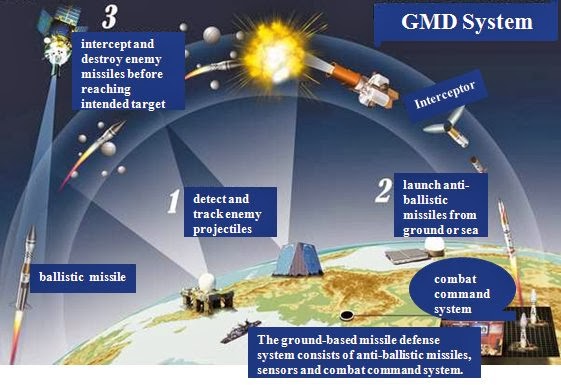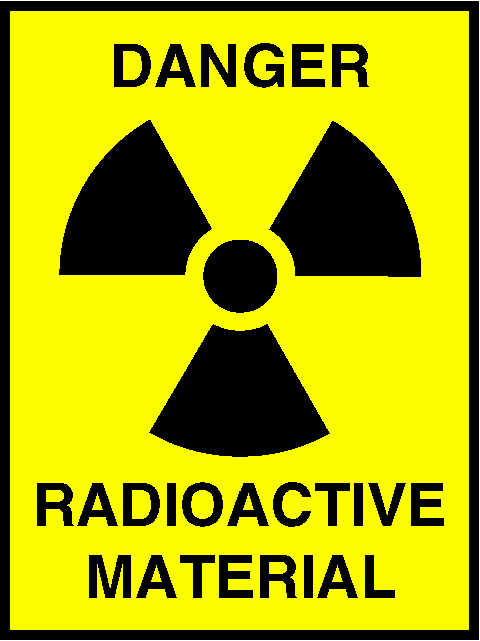
Blog
-
Geiger Readings for May 31, 2017
Ambient office = 111 nanosieverts per hourAmbient outside = 100 nanosieverts per hourSoil exposed to rain water = 101 nanosieverts per hourMango from Central Market = 109 nanosieverts per hourTap water = 95 nanosieverts per hourFilter water = 75 nanosieverts per hour -
Nuclear Weapons 282 – Development Of U.S. Ground-based Midcourse Defense System – Part One of Two Parts
Part One of Two Parts:
There is great concern today that North Korea will soon have an intercontinental ballistic missile that will be capable of carrying a nuclear warhead to a city on the West Coast of the United States. There are some estimates that this development is only a few years away. If such a missile were launched at the U.S., is it possible that the U.S. military might be able to intercept and destroy it before it hit its intended target?
Since the dawn of the age of nuclear weapons in 1945, the U.S. has always considered the threat of massive retaliation our best defense against a nuclear attack. In addition to the threat of retaliation, anti-missile defense systems have been discussed. The Army first asked Bell Labs in 1955 to begin studying an antiballistic missile system. Money was spent and a lot of work was done but technical challenges prevented development and sustained deployment of a functional.
In 1972, The U.S. and the Soviet Union signed the Antiballistic Missile Treaty (AMT) which severely restricted both parties from developing big antiballistic missile defense systems for their whole territories. Both parties agreed to limit antiballistic missiles to under 100 interceptors at a single location. The Clinton administration began working on a National Missile Defense system in the 1990s.
The terrorist attacks on 911 motivated the Bush administration to withdraw from the AMT which the Russians had taken over from the Soviet Union. He fast tracked what came to be known as the GMD. Deployment of the system began in 2004 and has continued to this day.
As the first interceptors were built and tested, design problems were reveals. The problems were fixed on some of interceptors at great expense. Later interceptors were based on updated designs. The result of this process was that not all the interceptors contained the same hardware. A 2014 Pentagon report found that “The reliability and availability of the operational [ground based interceptors] is low, and the MDA continues discovering new failure modes during testing.”
A few years ago, a very serious design flaw was found in the interceptors. It turned out that vibrations from the interceptor’s thrusters were affecting the navigation system and throwing the interceptors off course. A new design for the thrusters was developed and the interceptors were upgraded. The new thrusters were tested in 2016 but the results of the test were disputed with the Pentagon saying that the test was successful and the LA Times reporting that the test failed.
The GMD is a work in progress. As new problems are found, solutions are developed and deployed. Critics say that the GMD program should do more testing on components and systems before they are purchased. They call for more oversight for the GMD program. They take exception to the 2010 Department of Defense Ballistic Defense Review that states that “the United States is currently protected against limited ICBM attacks.” They are also skeptical of the 2015 U.S. Senate report that claims that the GMD protects the entire U.S. from a North Korean missile attack. The General Accounting Office says that “GMD flight testing, to date, was insufficient to demonstrate that an operationally useful defense capability exists.”
Please read Part Two
Artist’s concept of a GMD system:
-
Geiger Readings for May 30, 2017
Ambient office = 104 nanosieverts per hourAmbient outside = 136 nanosieverts per hourSoil exposed to rain water = 125 nanosieverts per hourRoma tomato from Central Market = 131 nanosieverts per hourTap water = 99 nanosieverts per hourFilter water = 89 nanosieverts per hour -
Radioactive Waste 232 – Amount Of High Level Nuclear Waste In Each State
I have often blogged about the nuclear waste problem in the U.S. Currently the US has about seventy five thousand tons of high level nuclear waste including spent nuclear fuel, waste left over from the development and manufacture of nuclear weapons and plutonium awaiting disposal.
There are about seventy five locations in the U.S. where nuclear waste is stored. There are one hundred nuclear power reactors operating in the U.S. and they keep producing nuclear waste. All of the spent fuel cooling pools are filling up and, if the spent fuel cannot be relocated soon, some reactors will have to be shut down.
The U.S. was planning on a permanent geological repository at Yucca Mountain in Nevada but that project was shut down in 2009. It is now estimated that there will be no permanent repository in the U.S. before 2050. Here is a listing of the amounts of waste and the number of waste storage sites per state:
State Metric Power Waste Tons Reactors Sites
Alabama 3840 5 2
Alaska 0 0 0
Arizona 2390 3 2
Arkansas 1530 2 1
California 3390 2 9
Colorado 30 0 2
Connecticut 2250 2 2
Delaware 0 0 0
Florida 3330 4 4
Georgia 3030 4 2
Hawaii 0 0 0
Idaho 130 0 4
Illinois 10180 11 8
Indiana 0 0 0
Iowa 530 1 1
Kansas 770 1 2
Kentucky 0 0 0
Louisiana 1470 2 2
Maine 540 0 1
Maryland 1550 2 4
Massachusetts 720 1 5
Michigan 3050 5 5
Minnesota 1390 3 2
Mississippi 1010 1 1
Missouri 790 1 3
Montana 0 0 0
Nebraska 1010 1 2
Nevada 0 0 0
New Hampshire 660 1 1
New Jersey 3020 4 2
New Mexico 4.9 0 4
New York 4180 6 6
North Carolina 3760 5 4
North Dakota 0 0 0
Ohio 1330 2 3
Oklahoma 0 0 0
Oregon 350 0 3
Pennsylvania 7330 9 6
Rhode Island 0 0 0
South Carolina 4680 7 5
South Dakota 0 0 0
Tennessee 1970 4 3
Texas 2610 4 5
Utah 0 0 0
Vermont 710 0 1
Virginia 2850 4 3
Washington 750 1 3
West Virginia 0 0 0
Wisconsin 1490 4 4
A few states have no waste at all, and a few have a great deal of waste. Some states no longer have nuclear power reactors operating but still have waste. Some states have more waste sites than operational reactor because some power stations have multiple reactors and some states have waste left over from shut down reactors or weapons development.
Even if we create a permanent geological repository somewhere in the U.S., the task of transporting all the existing waste to the site of the repository would be monumental. Aside from the expense, the trucks carrying the waste would be vulnerable to accidents and to deliberate attacks by terrorists.
Perhaps the best disposal method for a lot of the waste would be to drill holes five miles deep into bedrock, fill a couple of miles of the hole with nuclear waste and filled the rest with concrete, crushed rock and/or soil. The holes could be drilled on reactors site by moveable drilling rigs at a fraction of the cost of a permanent geological repository and transporting all the waste.
-
Geiger Readings for May 29, 2017
Ambient office = 121 nanosieverts per hourAmbient outside = 123 nanosieverts per hourSoil exposed to rain water = 112 nanosieverts per hourCrimini mushroom from Central Market = 114 nanosieverts per hourTap water = 90 nanosieverts per hourFilter water = 80 nanosieverts per hour -
Geiger Readings for May 28, 2017
Ambient office = 95 nanosieverts per hourAmbient outside = 116 nanosieverts per hourSoil exposed to rain water = 117 nanosieverts per hourBartlett pear from Central Market = 75 nanosieverts per hourTap water = 108 nanosieverts per hourFilter water = 100 nanosieverts per hour





